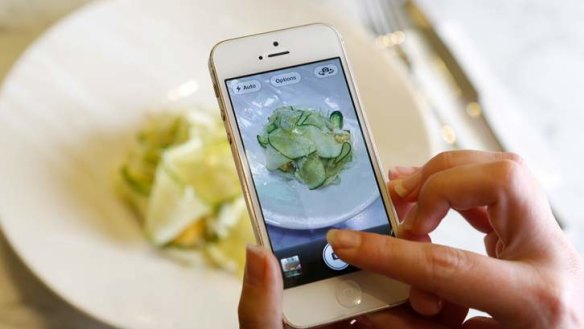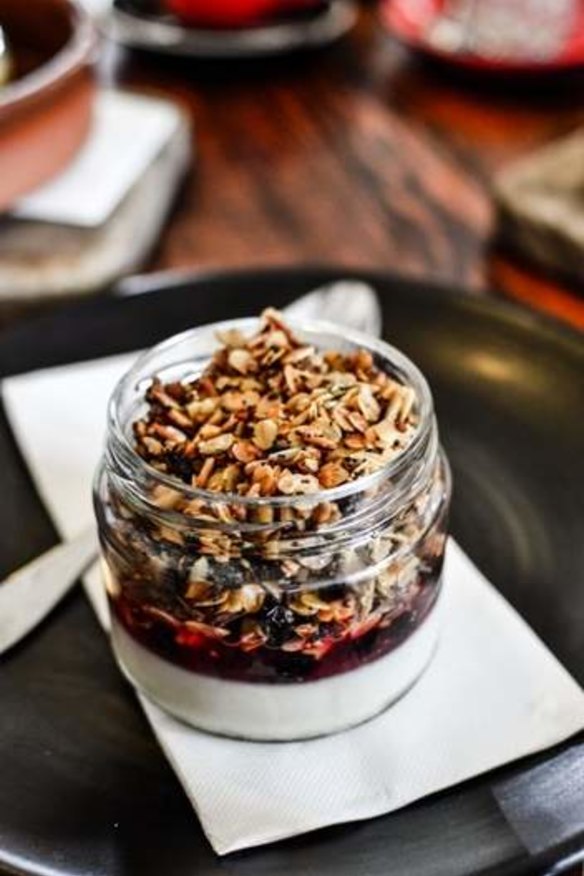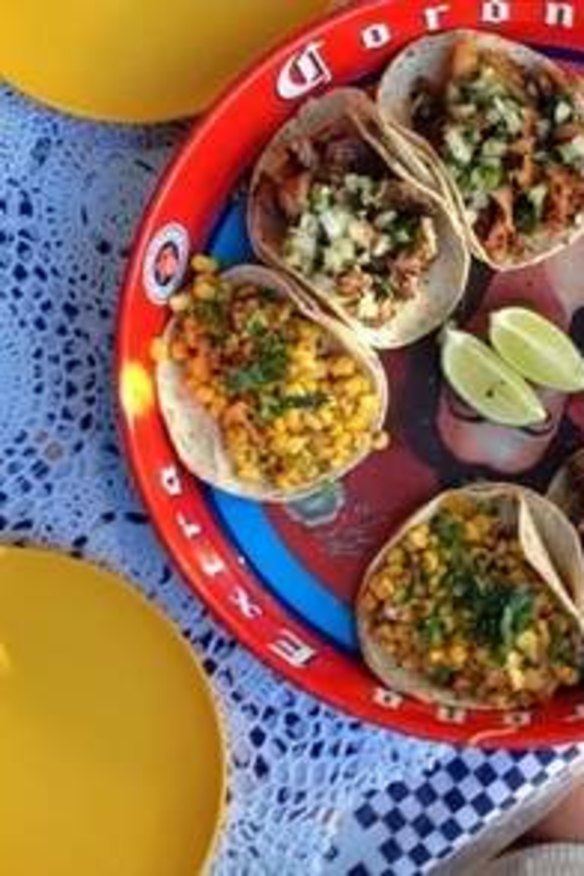The 10 commandments of food photography

I have a confession: I'm a chronic foodographer. It's a particular strain of obsessive compulsive disorder where the sufferer can't enjoy an ice-cream without an iPhone camera, let alone bite down on a burger before it's backlit. I admitted I had a problem a couple of years ago, en route to a much-anticipated dinner at Momofuku Seiobo in Sydney. I had endured insufferable hiccupping for hours. "Babe," said my boyfriend as we were walking out the door, "Would you mind leaving your camera here, just for once?" It wasn't a traditional scare tactic, but my hiccups were gone faster than you can say "pork belly buns".
We are in the middle of a food photography epidemic and social media is to blame for the boom. Sixteen billion photographs have been shared on Instagram to date at a rate of 55 million images a day, while Facebook users were uploading 350 million photos daily as of September. The connection between social media and photographing food piqued the interest of researchers last year. One study published in the Journal of Consumer Psychology warns that overexposure to food images results in decreased satisfaction when eating it. Another, in the Journal of Psychological Science, suggested that rituals – such as posting pictures of your plate – might make food taste better.
Most research in this area links the use of social media to increased narcissism in Gen Y, characterised by a tendency to boast and talk about oneself (or in this case, one's meals) publicly. "It's not anything like that," says Professor Neil Selwyn, who researches the use of digital media in everyday life at Melbourne's Monash University. "I don't think we're any more egocentric than we have been. We're just egocentric in different ways."
Professor Selwyn says taking photographs of food is not a recent trend – think centuries-old still life paintings of fruit bowls and feasts and holiday food snaps. Social media has merely made the phenomenon more visible.
Food photography is especially visible in Melbourne, the city that Instagrams and "likes" more photographs than any other subject and state. According to a study into Instagram by the University of Technology, Sydney and creative advertising agency The Works, Instagram users in Sydney, Brisbane and the Gold Coast are more likely to take selfies. Douglas Nicol, creative partner and director at The Works, puts the Melbourne preference for food photography down to "the Melbourne brand", which is backed by an indoorsy, European culture.
Instagram has democratised food photography. It's a classic case of positive reinforcement, where a like or comment on a picture of food results in affirmation, increasing the likelihood that an individual will repeat the action.

Melbourne food blogger I-Hua Lim, author of The Chronicles of Ms I-Hua & The Boy, photographs meals at restaurants to make recommendations, and at home to demonstrate skill. The couple's stunning home cooking is less meat and two veg, and more squares of pork shoulder and smoked pommes puree served on a wooden slab under a glass dome. "[Taking photos of food] is such a great way for everyone to learn about different types of food ... I would never have learned about many different cuisines ... and about the types of ingredients or produce that's out there," says Lim.
Her family, friends and colleagues have learnt not to touch their plates before she has photographed them. But some eateries are making it difficult for food photographers to get the perfect shot. Momofuku Seiobo has a no-flash policy, and Brunswick East Project in Melbourne displays a "No hawkers or bloggers" sign on the door. Bar Americano in Melbourne CBD bans photographs altogether. Owner Matthew Bax introduced the policy after regulars started complaining. "Nobody wants to have a camera flashing over them ... My customers' experience and privacy are always of paramount importance to me. If that policy offends a few bloggers then I'll just have to wear it."
Bengt Baumgartner, general manager of Melbourne's European and its associated Spring Street eateries, says the group approaches food photographers on a case-by-case basis. "We're open to photography so long as it's for personal use, not commercial ... From a blogging perspective, it complements the writing and is an important part of promoting our business. It's just a matter of going about it in the right way," he says. Recently there was an incident in Spring Street Grocer's cramped basement cheese room, where a customer armed with a camera disregarded what is commonly regarded as personal space and took photos "up in the face" of the serving fromager.

The City Wine Shop next door has a one-photo policy: diners are welcome to take a memento, but will be asked to lay off the camera if they insist on snapping away at every dish.
Not every dish is worthy of being flaunted on social media, but some appear to crop up more than others. I, for example, am ashamed to admit that I do not have a picture of LuxBite's famous lolly bag cake on my personal Instagram roll. Perhaps the most Instagrammed dish of 2013 was the cronut at Tivoli Road Bakery. Although the cronut is no longer available, owner and baker Michael James says that social media images are fantastic for publicity, and has customers come in for the specials he photographs and shares online. He takes photos of his food, whether to support a restaurant he admires, like Cutler & Co., or so he can remember the twenty-something dish degustation at Michelin-starred Mugaritz in Spain. "I'll also take photos of different bread, pastries or food that we can cook at home, or to give us ideas and inspiration to do our own thing and take our own angle," he says.
But being in the industry doesn't leave you immune from criticism when it comes to food photography. Recently Martha Stewart tweeted a picture of what she described as "Iceberg wedge with homemade Russian dressing". It looked like the contents of an aeroplane sick bag. Her tweet went viral, and the public criticism flooded in. The New York Times restaurant critic Pete Wells weighed in, tweeting, "So disillusioning. This is like seeing Jascha Heifetz play Tchaikovsky's violin concerto on his armpits."
The hashtag #struggleplate, used to denote unappetising food photographs on social media, also appeared regularly. Sydney blog Cook Suck has built a schadenfreude-based following by robustly critiquing would-be food photographers' struggleplates.
Photography talent or otherwise, there has been a shift in the way we use cameras. Once upon a time, we snapped on film and waited 24 hours for memories to be developed. This nostalgic aspect of photography, like our photographs in frames on the mantelpiece, is fading. Today's digital photography is being used not to capture a memory, but to present the self. As a food blogger who grew up with a camera-crazy father, I am the first to admit I often order food based on its photographic merit. I can't recall when my uncontrollable desire to photograph food surfaced, but social media – like eating – brings people together, and there's absolutely nothing wrong with that.
The 10 commandments of food photography
1. Thou shalt not use flash
Respect other diners and make sure your flash is down before you shoot.
2. Keep it quick
Take as few photographs as possible, as quickly as possible, and put away that tripod - you look ridiculous.
3. Be selective
No one cares about an empty plate smeared with sauce. Don't settle for the ordinary.
4. Ask permission
If you have a single-lens reflex camera or want to use your phone in an upmarket restaurant, always ask the waiter if it is OK for you to take photographs. You might at least get the good-looking cake.
5. Honour thy staff and chef
Be courteous. The staff are doing you a favour, not the other way around. Post the pictures that best represent the chef who crafted your food.
6. Thou shalt not have eyes bigger than thy stomach
If you truly care about food, do not order so much that you can't finish it. Even if you immortalise your meal on camera, not eating it still counts as waste.
7. Thou shalt not covet thy neighbour's dish
Do not try to take photographs of food on the table next to you.
8. Thou shalt not stray
You would not walk up and down the hallway the first time you are invited to someone's house, so don't cavort around an eatery as if you own the place. Most importantly, do not, under any circumstances, stand on a chair.
9. Keep it off the table
Put your phone or camera out of sight. Placing it on the table takes up precious dishspace and can be a distraction.
10. Be original
The more unique your photographs, the better they will be received on social media.
Restaurant reviews, news and the hottest openings served to your inbox.
Sign up